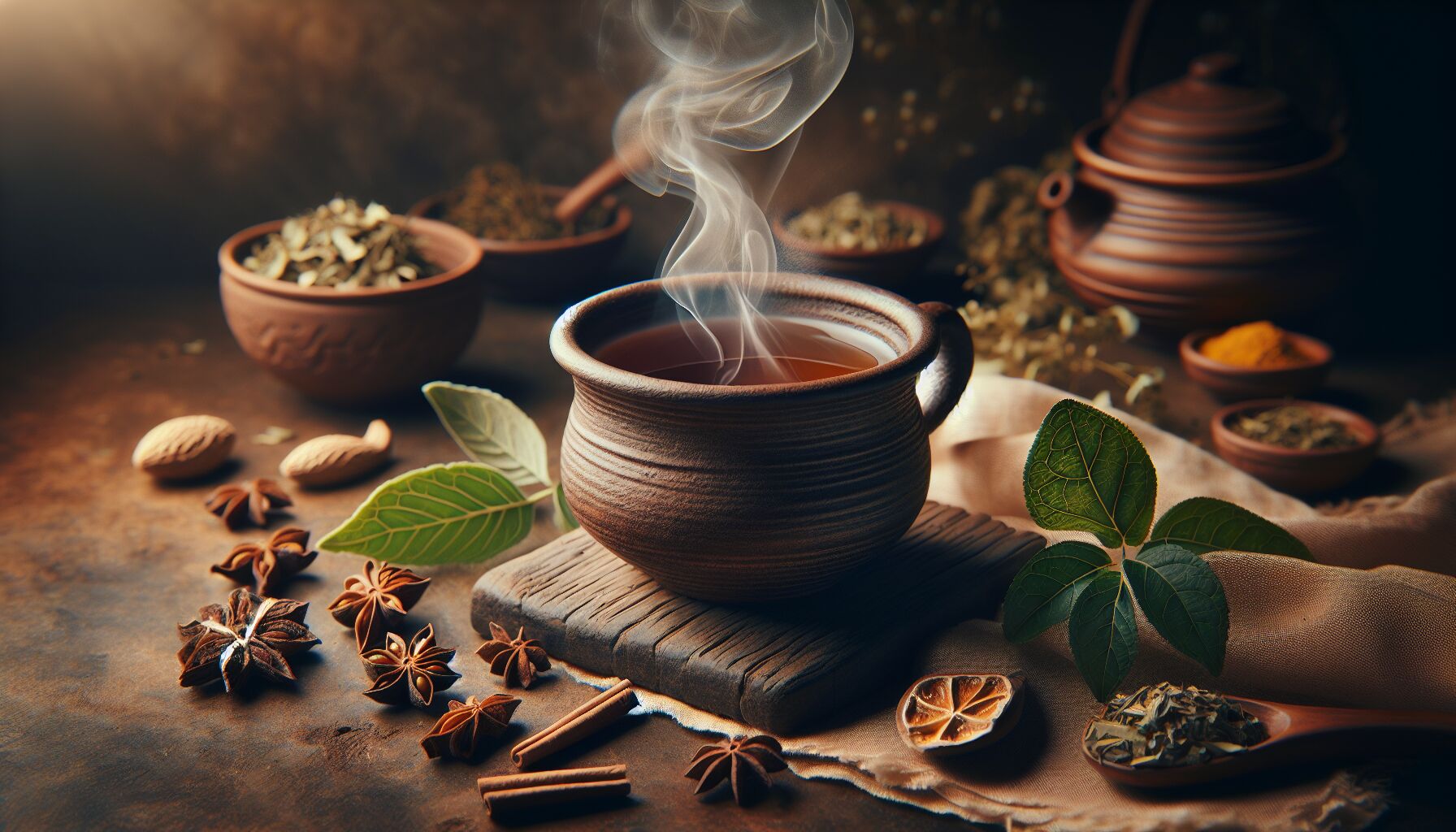 Aging isn’t just about counting birthdays—it’s a slow wear-and-tear process fueled by oxidative stress, inflammation, and environmental toxins. The body, brilliant as it is, fights back with its own antioxidant defenses. But over time, free radicals—the unstable molecules that damage cells—have a way of outpacing the body’s ability to neutralize them. This is where triphala steps in, offering a potent blend of natural antioxidants that help slow the aging process at a cellular level.
Aging isn’t just about counting birthdays—it’s a slow wear-and-tear process fueled by oxidative stress, inflammation, and environmental toxins. The body, brilliant as it is, fights back with its own antioxidant defenses. But over time, free radicals—the unstable molecules that damage cells—have a way of outpacing the body’s ability to neutralize them. This is where triphala steps in, offering a potent blend of natural antioxidants that help slow the aging process at a cellular level.
You’ve probably heard of vitamin C or green tea’s famed catechins, but Ayurvedic medicine has relied on triphala as a powerhouse antioxidant long before modern science started measuring ORAC (Oxygen Radical Absorbance Capacity) values. This ancient herbal concoction—a simple yet sophisticated mix of amla (Indian gooseberry), bibhitaki, and haritaki—works synergistically to combat oxidative damage. Imagine a three-person security team, each member with a specialized role, forming an unshakable defense against cellular assault.
Amla, the vitamin C giant, does more than just boost immunity. It scavenges free radicals, stimulates collagen production, and protects skin from the kind of oxidative stress that leads to wrinkles and sagging. It’s why Ayurvedic practitioners often recommend triphala for maintaining youthful skin and strong hair. Meanwhile, bibhitaki lends its detoxifying prowess, supporting lung and liver function—two critical systems vulnerable to oxidative stress. And then there’s haritaki, often called the “king of medicine” in Ayurveda, which helps regulate inflammation and maintain youthful energy levels.
Why does this matter? Because oxidative stress isn’t just about skin deep beauty—it’s deeply tied to cognitive function, heart health, and even digestive health. Free radical damage plays a sneaky role in neurodegenerative diseases like Alzheimer’s, and studies have started uncovering triphala’s neuroprotective benefits. It enhances mitochondrial efficiency (think of mitochondria as tiny power plants inside cells), helping maintain brain energy and resist age-related cognitive decline.
As Albert Szent-Györgyi, the Nobel laureate who discovered vitamin C, once said:
“Discovery consists of seeing what everybody has seen and thinking what nobody has thought.”
Triphala isn’t some overnight miracle, but its role in slowing cellular aging is a discovery that modern research is beginning to appreciate. Continuous, small doses over time can help the body fend off chronic inflammation, often called the “silent killer” behind diseases of aging.
And let’s not forget its connection to gut health. A well-functioning digestive system keeps nutrients flowing efficiently, delivering essential vitamins and minerals to cells while eliminating toxins. When digestion is sluggish, oxidative stress worsens—antioxidants aren’t just about what you consume; they’re also about what your body can properly absorb and use. So, triphala doesn’t just bombard the body with antioxidants; it also promotes digestive health, ensuring that the antioxidants *actually* get to where they’re needed most.
Could this ancient blend be one of the simplest ways to support longevity? The evidence suggests it just might be.
How triphala supports digestive health and detoxification
If there’s one thing Ayurvedic medicine gets right, it’s the understanding that health begins in the gut. Modern science might call this the gut-brain axis or microbiome balance, but Ayurveda saw the connection centuries ago. Triphala plays a pivotal role in digestive health, working like a seasoned mechanic—tuning, cleansing, and optimizing gastrointestinal function.
At its core, triphala is a digestive tonic, not just a quick fix for bloating or sluggishness. It does more than simply “clean things out”—it nourishes and restores the digestive tract over time. Think of it as a gardener tending to soil, ensuring that what grows (nutrient absorption, metabolism, immunity) flourishes in the best possible conditions.
The Gentle Cleanse That Keeps Things Moving
There’s a delicate balance between detoxification and nourishment, and triphala walks that line expertly. Unlike harsh laxatives that shock the system into evacuation, triphala encourages natural movement in the colon. The secret? Haritaki—one of its key components—works as a mild stimulant for peristalsis (that rhythmic motion that keeps food traveling through the gut). This action keeps things flowing without forcing or depleting the system, making it a go-to for those with occasional constipation or irregular digestion.
Meanwhile, bibhitaki serves as the detox specialist, flushing out toxins that tend to accumulate in the liver and intestines. This is crucial because when the body’s primary detox organs get overloaded, waste lingers longer than it should, leading to sluggish energy, brain fog, and even skin breakouts. Ayurvedic practitioners often suggest triphala as part of regular detox regimens not for an extreme reset, but for a sustainable, ongoing cleanse.
Feeding the Gut Microbiome with Prebiotic Power
A healthy gut isn’t just about keeping bad bacteria out—it’s about nurturing the good ones so they thrive. What most people don’t realize is that triphala doubles as a prebiotic, meaning it feeds and supports beneficial gut bacteria. Amla, in particular, is loaded with natural fibers and polyphenols that gut-loving microbes adore. Want more diversity in your microbiome? Triphala subtly encourages it, laying the groundwork for better digestion, improved immunity, and even mood stability.
There’s growing research linking gut health to neurotransmitter production, with some scientists calling the gut the body’s “second brain.” Ever wondered why stress messes with digestion or why certain foods boost your mood? That’s the gut-brain connection at work. By supporting gut equilibrium, triphala may indirectly contribute to better mental clarity, emotional balance, and even sleep quality.
Absorption Matters More Than You Think
You can eat all the right foods, but if your body isn’t absorbing nutrients properly, are you really getting the full benefit? That’s another place where triphala shines. By maintaining a healthy gut lining and supporting stomach acid production, it ensures that vitamins, minerals, and antioxidants get where they need to go. Poor digestion often leads to nutrient deficiencies, even in people who eat well. Triphala works in the background, quietly enhancing absorption and maximizing the benefits of a healthy diet.
As Hippocrates famously said:
“Let food be thy medicine and medicine be thy food.”
Ayurvedic medicine has echoed this sentiment for centuries, recognizing that a thriving digestive system is the foundation of overall health. And when digestion works efficiently, everything else—from immunity to energy levels—tends to follow suit.
But incorporating triphala into your routine doesn’t have to mean gulping down bitter powders or brewing complicated herbal teas (unless you’re into that). There are plenty of easy ways to make it a seamless part of daily life—whether through capsules, simple tonics, or even creative culinary additions. Stay with me—this is where things get fun.
Ways to incorporate triphala into your daily routine
 If the idea of integrating an Ayurvedic remedy into your daily routine feels a bit daunting, don’t worry—triphala is surprisingly flexible. Unlike some wellness fads that require complicated brews or precise timing, this ancient blend fits seamlessly into modern life. Whether you’re a tea drinker, a smoothie enthusiast, or someone who prefers the ease of a capsule, there’s a way to make triphala work for you.
If the idea of integrating an Ayurvedic remedy into your daily routine feels a bit daunting, don’t worry—triphala is surprisingly flexible. Unlike some wellness fads that require complicated brews or precise timing, this ancient blend fits seamlessly into modern life. Whether you’re a tea drinker, a smoothie enthusiast, or someone who prefers the ease of a capsule, there’s a way to make triphala work for you.
The Classic Approach: Powders and Teas
Traditionally, Ayurvedic medicine recommends triphala as a powder—called churna—for maximum potency. While its earthy, slightly bitter taste isn’t exactly candy-like, there’s wisdom in the old-school method. Drinking triphala powder mixed with warm water before bed allows it to work overnight, gently supporting digestive health and detoxification while you sleep. Think of it as background maintenance for your gut—quietly doing the work without disrupting your routine.
If straight triphala water seems a little too… intense, try blending it into herbal teas with honey or lemon. Both add a touch of sweetness, balancing the astringency of the herbs. Some prefer steeping the powder in warm water for 5-10 minutes before drinking, creating a mild infusion rather than a full-bodied tonic.
Capsules for the On-the-Go Crowd
Not everyone has the time (or desire) to sip on an Ayurvedic brew every night. Luckily, triphala is widely available in capsule or tablet form, offering all the benefits in a much more convenient package. This method is excellent if you’re traveling, have a tight schedule, or just don’t love the taste but still want the advantages—better digestion, toxin elimination, and enhanced nutrient absorption.
Look for high-quality, organic formulations without unnecessary fillers. Since triphala is naturally grounding, taking it before bedtime can enhance its cleansing effects, but morning works just as well depending on your body’s rhythm.
Sneaky Additions: Smoothies and Culinary Creativity
For those who love experimenting in the kitchen, triphala blends surprisingly well into smoothies, juices, and even raw energy balls. A tiny pinch (we’re talking less than half a teaspoon) added to your morning smoothie pairs well with citrus fruits, mango, or banana—ingredients that mask the herbal bitterness while enhancing nutrient absorption.
Feeling adventurous? Some wellness-focused chefs infuse triphala into homemade energy bars, mixing it with dates, almonds, and coconut for a nutrient-dense bite. If you’re already using ingredients like turmeric, cinnamon, or ginger in your cooking, adding a touch of triphala here and there can subtly introduce it without overpowering flavors.
The Self-Care Ritual: Triphala Face Masks?
It’s no secret that Ayurvedic medicine connects outer beauty with internal health, but triphala isn’t only beneficial when consumed—it’s also a secret weapon in skincare. With its potent antioxidants and anti-inflammatory properties, some people mix triphala powder with rose water or honey to create a topical face mask. The result? A rejuvenating treatment that supports clear, healthy skin while nourishing it with natural astringents.
Finding What Works for You
The beauty of triphala lies in its adaptability. There’s no strict rulebook—just a range of possibilities depending on what fits best into your daily flow. Some people swear by a nightly tonic, while others sprinkle a bit into food here and there for a steady, cumulative effect. If you’re new to triphala, start small and observe how your body responds (everyone’s digestive system has its own rhythm, after all).
As Bruce Lee famously said:
“Absorb what is useful, discard what is not, add what is uniquely your own.”
Incorporating triphala isn’t about rigid protocol—it’s about making it work for your lifestyle. Whether you prefer a quick capsule, a balanced tea, or a creative smoothie blend, your body will appreciate the steady support.
 DS Haven In Light Of Things
DS Haven In Light Of Things





